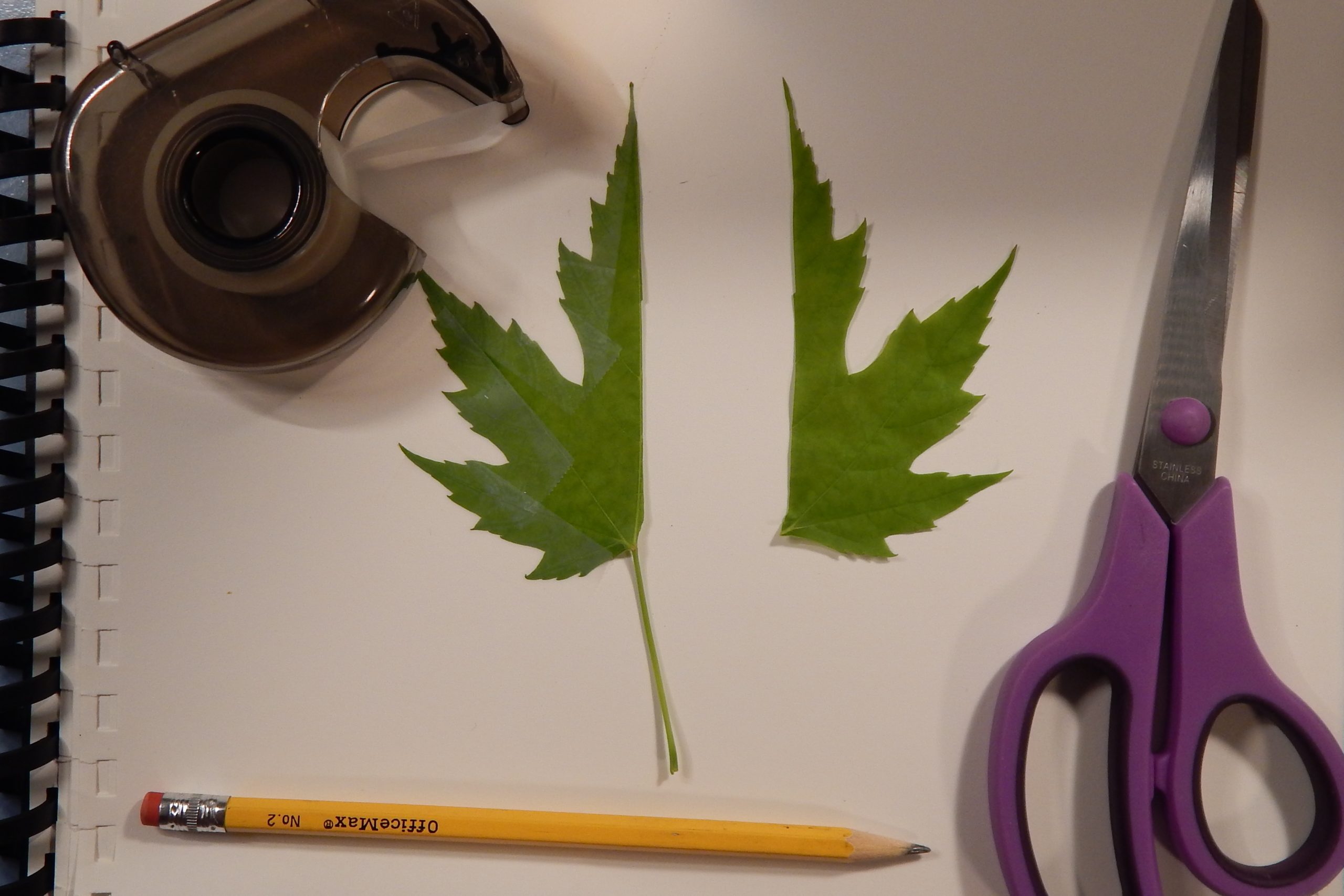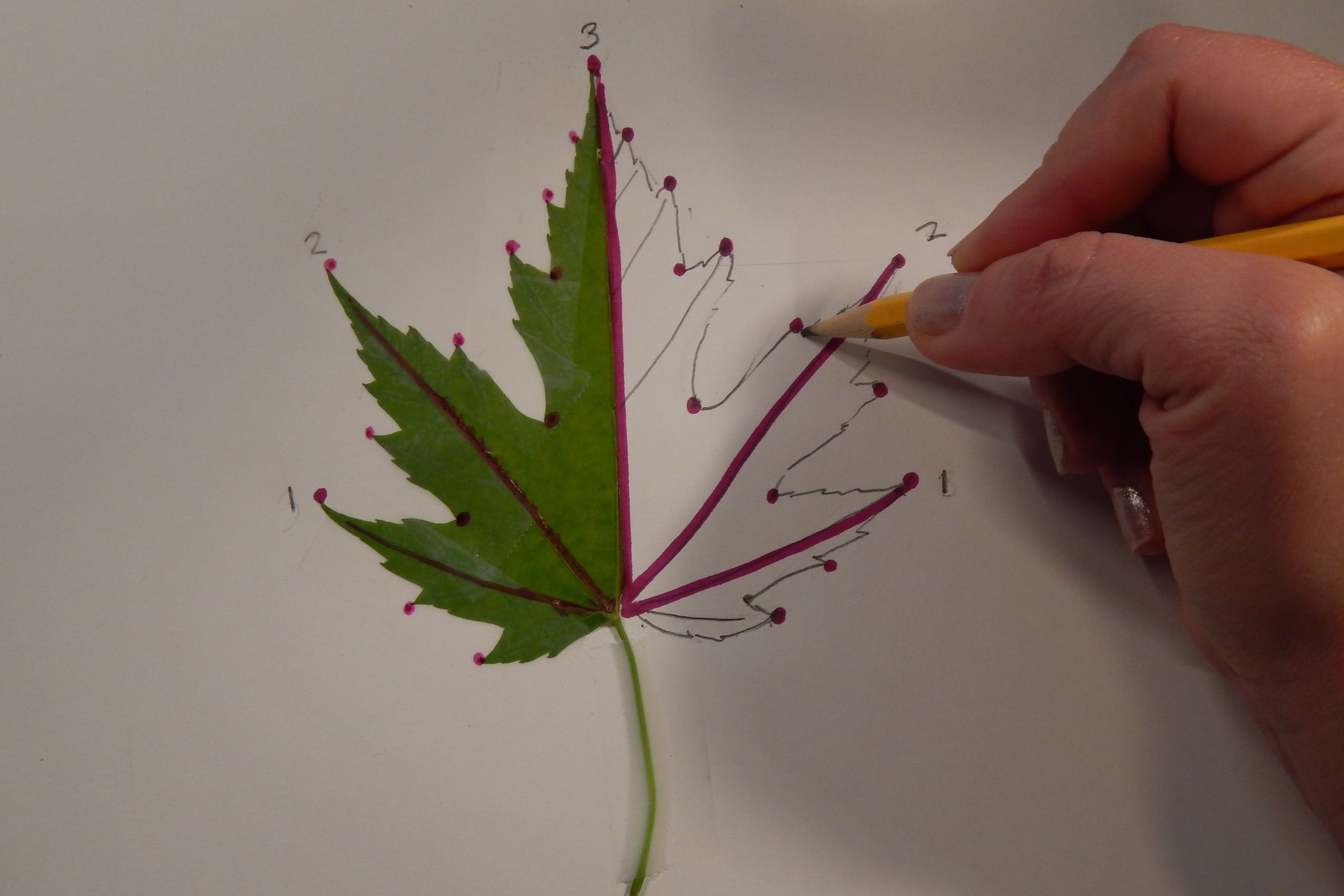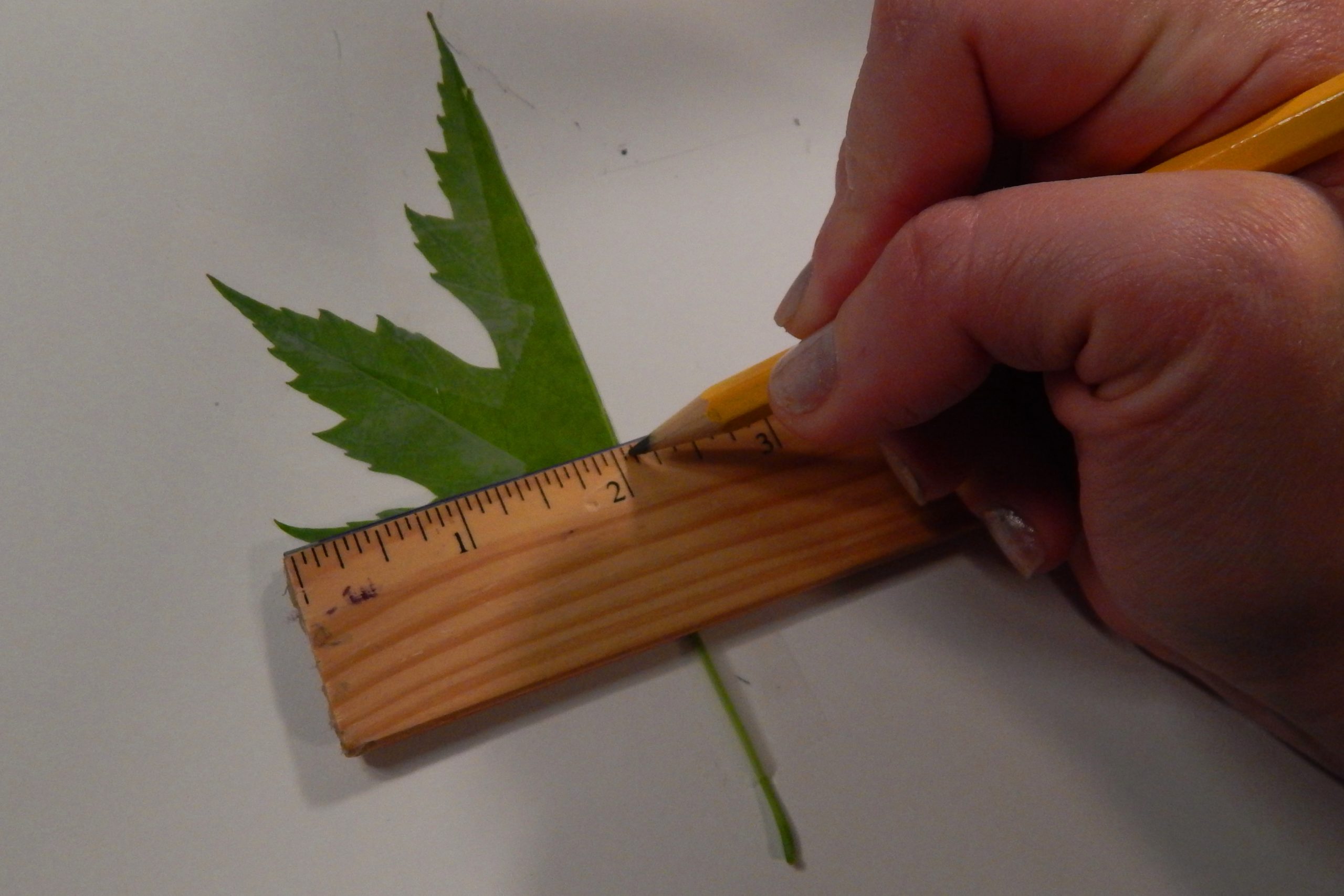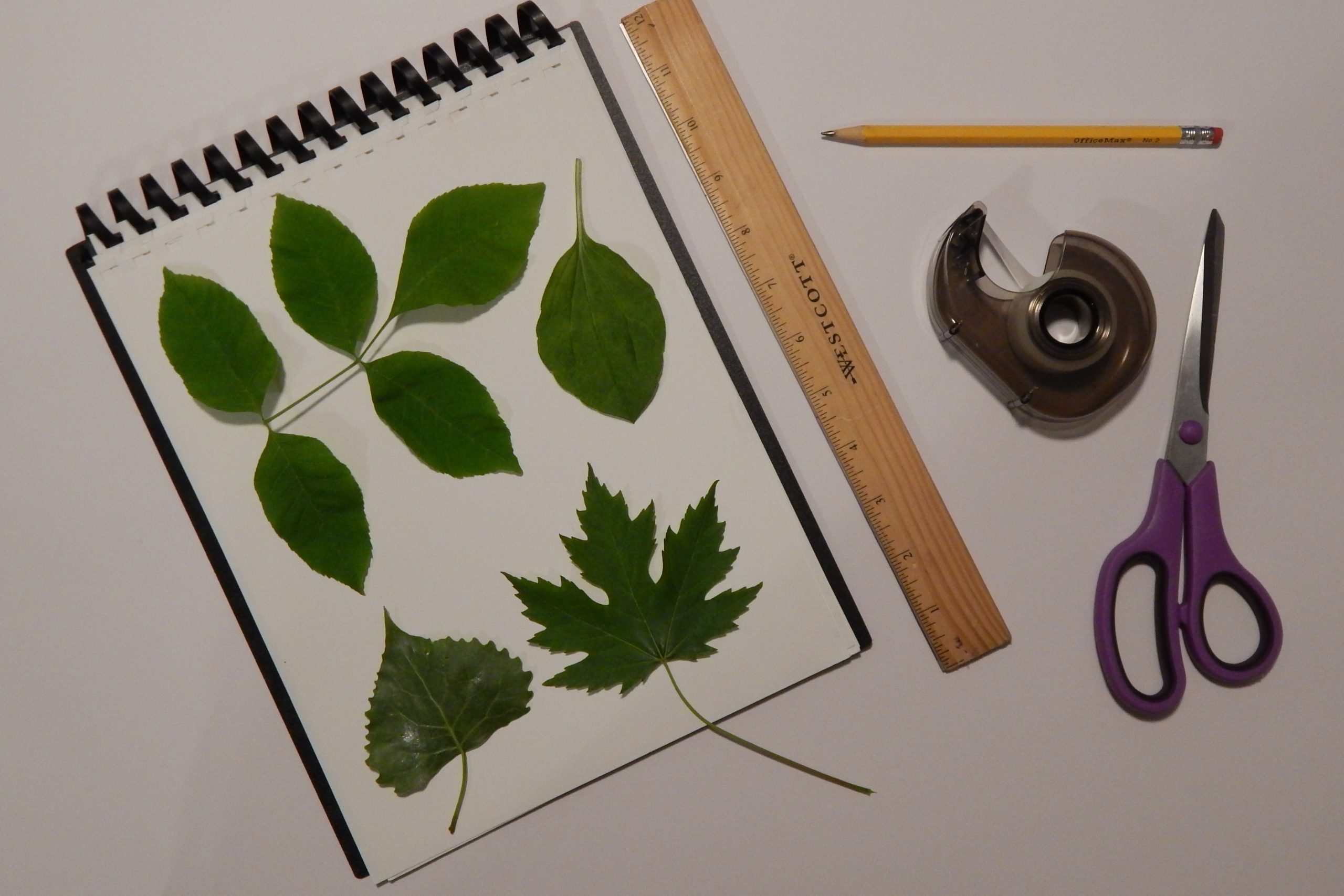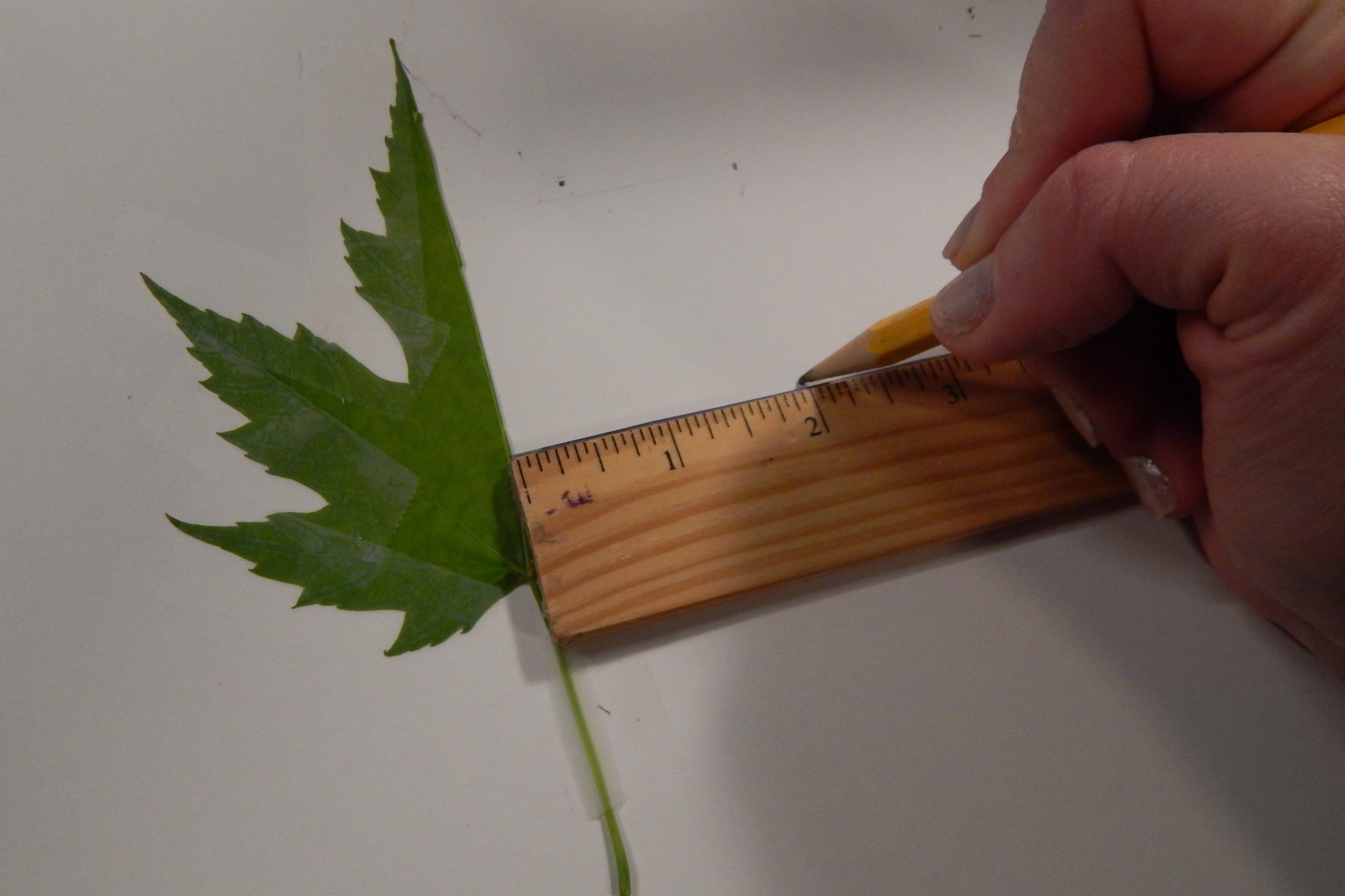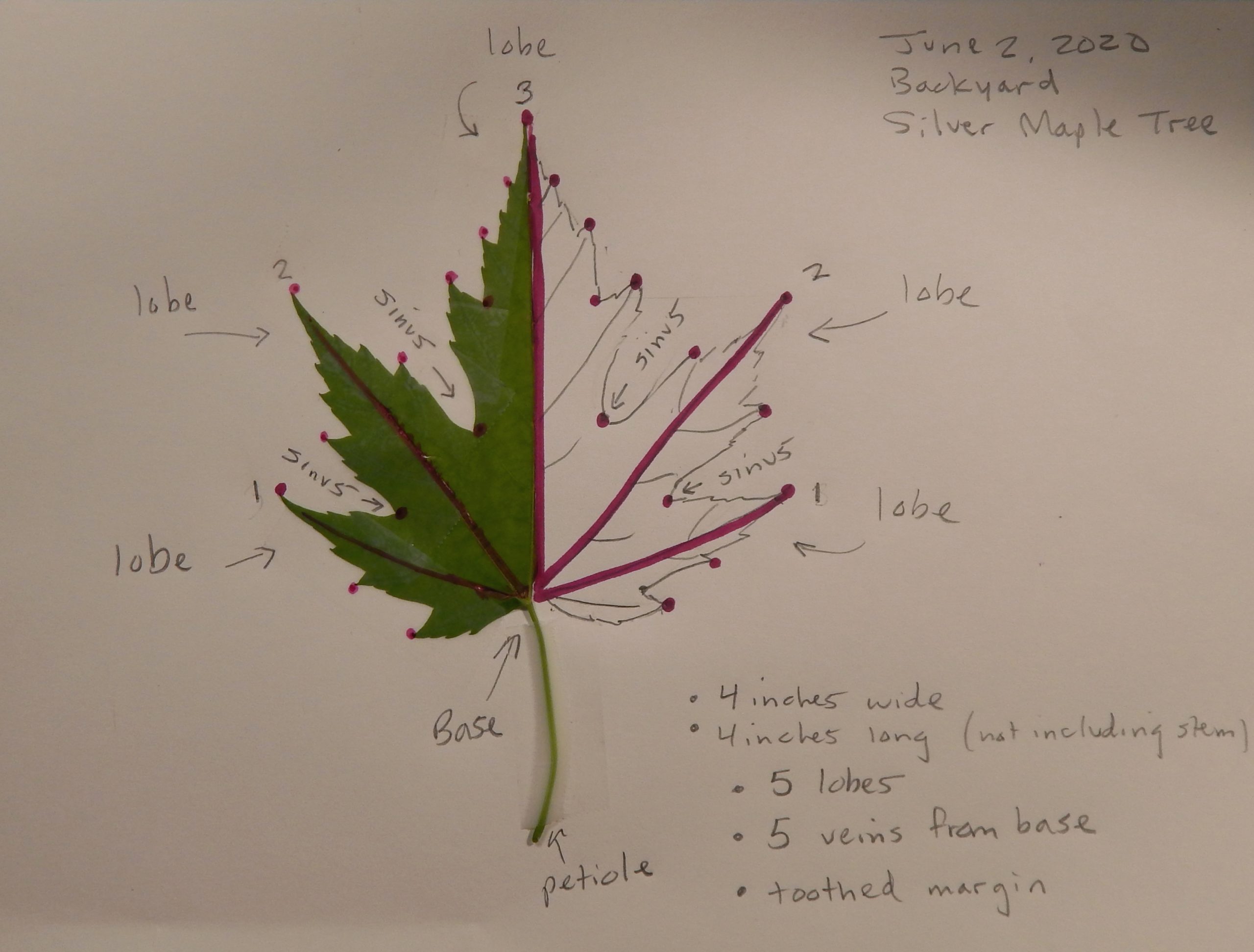Leaf Symmetry

Have science fun as a family! Complete activities with parental supervision.
Materials:
- Leaves from 2-5 different plants
- White paper
- Pencil
- Scissors
- Tape
- Ruler
Procedure
- Collect a live leaf from two to five different plants. Be careful not to rip the leaf. Only take what you need to minimize harming the plants.
- Start by the base of the stem and cut each leaf straight down the middle along the main vein.
- Tape one half of the leaf securely to a piece of paper.
- Check for reflection symmetry by flipping over the other half of the leaf, and placing it on the taped half. It is a match? Is it a mirror image of the other half? In what position is it not a mirror image? It is exactly the same as the other half, or a little different?
- Now look at the taped leaf half and try drawing its other half to make it a complete leaf once again. It takes close observation and practice! Some leaves are more complex than others. Start with a simple oval-shaped leaf. Advance to more complicated lobed leaves like Maple and Oak tree leaves.
- To help create its symmetrical half, use a ruler to measure how far each point of the leaf is from the main vein. Now measure this distance on the other side and make a dot. Observe how the biggest veins start at the base and radiate out. Try to copy this pattern in your drawing.
- Be sure to take a picture or video to share in the Facebook comments on the Buffalo Museum of Science or Tifft Nature Preserve pages!
What’s it all about?
Many patterns can be observed in nature. Symmetry is one of the easiest to find.
Something is symmetrical when it is the same on both sides. A shape has symmetry if a central dividing line (a mirror line) can be drawn on it, to show that both sides of the shape are exactly the same.
There are different types of symmetry such as bilateral (mirror image) versus radial (rotational) symmetry. We often see mirror image symmetry in leaves and flowers often exhibit radial symmetry.
Try It!
- After exploring reflection symmetry in different leaves, now try to identify the parts of individual leaves. Use this diagram to help you label these parts, such as lobe, sinus, base, veins, and petiole on your symmetry drawings.
